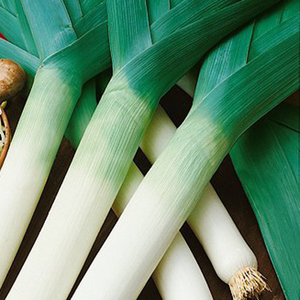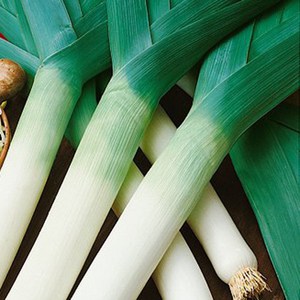Get a head start on leeks
Heirloom Vegetable Seeds
by Sandy Swegel
Organic leeks were $3.99 a pound in my grocery store this week. I love leeks because they add a more rich and complex flavor to soups and sauces than onions do. They are more expensive than onions but just as easy to grow. The only challenge for gardeners in areas with winter is that leeks have a long growing season and it’s not as easy to find leek seedlings for sale come planting time. In January, you can get a head start on leeks as this is an ideal time to start some seedlings to transplant this spring.
The ideal germination conditions for leek seeds are about 70 degrees in moist soil. They will germinate in cooler temperatures but may take a few more weeks to emerge.
Even though the seeds are small, germinate them in containers at least four inches deep rather than in a very shallow tray. We gently push the seeds about half an inch deep into the light potting mix. The seedlings don’t need individual cells so you can grow them in one big container. Their roots will intertwine but easily tease apart without breaking come planting time.
Once the leeks are growing they will continue to need light but easily handle cooler conditions if you need your indoor lights for something else. An unheated cold frame or a makeshift hoop house works great.
Come planting time, we plant the baby seedlings into six inch deep trenches (we want lots of long white stems). For now, just get those seeds started. The only thing to remember is not to let the soil dry out.
I always grow more leeks than I’m going to eat and leave them in the garden to flower. The leek flowers are beautiful and attract butterflies and bees!








